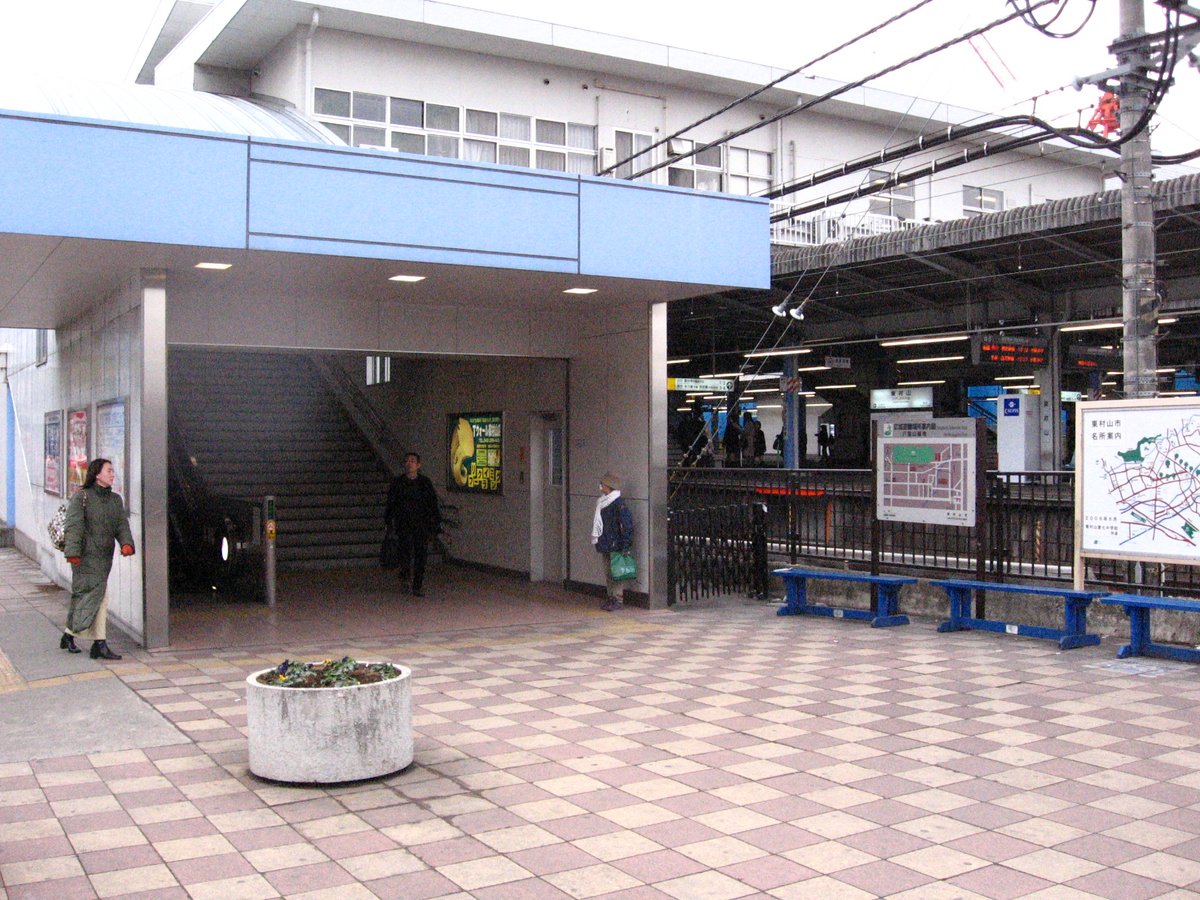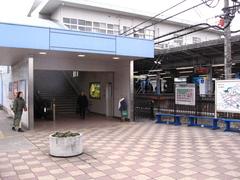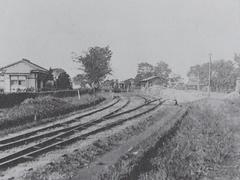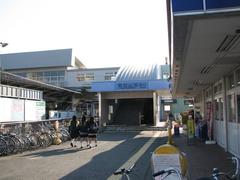
Higashi-Murayama Station: Visiting Hours, Tickets, and Tourist Guide
Date: 14/06/2025
Introduction: Higashi-Murayama Station’s History and Significance
Higashi-Murayama Station is a major gateway located in the western suburbs of Tokyo, seamlessly combining modern railway convenience with deep-rooted cultural and historical heritage. Established in 1894 during the Meiji era’s wave of modernization, it evolved into a pivotal interchange for the Seibu Shinjuku, Seibu Kokubunji, and Seibu-en lines. This strategic position allows for direct access to central Tokyo, neighboring prefectures, and local attractions, making it ideal for commuters, history buffs, and tourists seeking an authentic, suburban Tokyo experience.
The station is equipped with comprehensive amenities—bilingual signage, elevators, escalators, and barrier-free restrooms—ensuring accessibility for all travelers. Its ticketing system is versatile, offering single rides, IC cards (Suica, Pasmo), and special tourist passes. Its organized concourses and multiple island platforms streamline transfers and passenger flow.
Beyond its transit role, Higashi-Murayama provides access to a variety of historical and cultural sites, including the National Treasure-designated Shofukuji Temple, the Old Kumegawa Battlefield, and the Higashimurayama City Folk Museum. Nature lovers will enjoy nearby parks such as Kitayama Park and Yatsukuniyama—famously linked to Studio Ghibli’s My Neighbor Totoro. Visitors interested in local industry can tour the PoleStar Inc. Sauce Factory.
This guide covers essential information on station operations, ticketing, accessibility, travel tips, nearby attractions, and cultural highlights. For the latest schedules and travel planning, consult the Seibu Railway official website and tourism resources like Tokyo Metropolitan Tourism.
Contents
- Station Hours, Tickets, and Accessibility
- Historical Evolution and Station Layout
- Nearby Historical and Cultural Sites
- Guided Tours and Special Events
- Facilities, Exits, and Visitor Tips
- Train Times, Connectivity, and Infrastructure
- Tourist Significance and Local Experiences
- FAQs and Practical Advice
- Conclusion and Resources
1. Station Hours, Tickets, and Accessibility
Station Hours:
Open daily from approximately 5:00 AM to after midnight. Service start and end times may vary by line—check the Seibu Railway official website for details.
Ticketing:
- Purchase tickets at vending machines or via the Seibu Railway mobile app.
- IC cards (Suica/Pasmo) are accepted for convenient tap-and-go travel.
- Day passes and discount tickets provide cost-effective options for tourists.
- Special passes for unlimited rides on Seibu lines are available (Japan Travel Navitime).
Accessibility Features:
- Elevators, escalators, tactile paving, and barrier-free restrooms.
- Staff assistance for travelers with disabilities or special needs.
Travel Tips:
- Avoid peak commuter hours (7:00–9:00 AM, 5:00–7:00 PM) for a quieter experience.
- Spring and autumn offer the most pleasant weather for sightseeing.
2. Historical Evolution and Station Layout
Early Development:
Opened in 1894, the station played a key role in Tokyo’s suburban growth, linking emerging communities with the capital.
Modernization:
- The original ground-level station was redeveloped between 2015–2024.
- The current elevated structure has two main entrances, a central ticket barrier, and three island platforms serving six tracks.
- Modern upgrades focus on accessibility and efficient passenger flow.
Station Layout:
- Four island platforms serve up to eight tracks.
- Clear bilingual signage and platform screen doors for safety.
- Multiple ticket gates (North, South, Central) provide access to different parts of the city.

3. Nearby Historical and Cultural Sites
Old Kumegawa Battlefield:
A significant site of medieval battles, located a 20-minute walk or short bus ride from the station.
Shofukuji Temple:
Home to Tokyo’s oldest surviving structure—a 15th-century Jizo hall, recognized as a National Treasure. Open: 9:00 AM–5:00 PM.
Higashimurayama City Folk Museum:
A ten-minute walk from the west exit, this museum displays artifacts related to the city’s role as a transportation hub. Open: Tue–Sun, 9:30 AM–4:30 PM; closed Mondays.
Kamakura Kaido Marker:
Commemorates the historic road connecting Edo (Tokyo) to Kamakura, a short walk from the station.
National Hansen’s Disease Museum:
Documents the history of Hansen’s disease in Japan, offering insightful exhibits on medical and social history. Open: 9:30 AM–4:30 PM (closed Mondays); Admission: ¥300 adults, free for children under 15.
PoleStar Inc. Sauce Factory:
A historic local industry founded in 1850, offering tours and tastings by appointment.
Parks:
- Kitayama Park: Ideal for strolls and seasonal flower viewing.
- Yatsukuniyama: Said to have inspired My Neighbor Totoro, perfect for fans and nature lovers (Sekaiproperty).
4. Guided Tours and Special Events
Local tourism offices occasionally organize walking tours of the area’s historical and cultural highlights. Key seasonal events include cherry blossom viewing in spring and the Summer and Autumn Cultural Festivals, featuring performances, crafts, and food stalls.
5. Facilities, Exits, and Visitor Tips
Facilities:
- Waiting rooms, accessible restrooms, baby care rooms.
- Convenience stores (FamilyMart, NewDays), cafés, kiosks, local product shops.
- Coin lockers and luggage delivery (takkyubin).
- Free Wi-Fi and USB charging stations.
Exits:
- East Exit: City center, bus terminals, shopping streets.
- West Exit: Residential areas, Kitayama Park.
- South Exit: Parks and hiking trails (Hiking Tokyo).
Visitor Tips:
- Use IC cards for hassle-free travel.
- Store luggage in coin lockers if exploring nearby parks.
- For onward travel, bus and taxi stands are available at main exits.
- Download the Audiala app for live train updates and route planning.
6. Train Times, Connectivity, and Infrastructure
Lines Served:
- Seibu Shinjuku Line: Direct express trains to Shinjuku in about 30–40 minutes.
- Seibu Kokubunji Line: Transfers to the JR Chuo Line at Kokubunji; through services temporarily suspended due to station elevation works (Wikipedia).
- Seibu-en Line: Access to Seibu-en Amusement Park and Lake Tama.
Train Frequency:
- Peak hours: Every 3–5 minutes on main lines.
- Off-peak: 7–10 minutes between trains.
Ongoing Improvements:
- Station elevation and grade separation projects to improve safety and punctuality.
- Planned expansion of through services to Tokyo Metro lines.
Regional Connectivity:
- Direct access to Shinjuku, Takadanobaba, Kawagoe, and Fussa.
- Easy transfers to the JR network and other major Tokyo transport lines.
7. Tourist Significance and Local Experiences
Cultural and Historical Attractions:
- Temples and spiritual sites like Shofukuji and Tokuzo-ji.
- Museums including the National Hansen’s Disease Museum and Folk Museum.
- Industrial heritage at PoleStar Inc.
Natural Spaces:
- Parks such as Kitayama and Yatsukuniyama.
- Hiking and leisure at Sayama Park and Lake Tama.
Food and Drink:
- Mix of traditional eateries, izakayas, and international restaurants.
- Distant Shores Brewing offers local craft beer.
Festivals and Community:
- Summer and Autumn festivals, cross-cultural events with sister city Independence, Missouri.
Shopping:
- Traditional markets, modern retail, and specialty shops.
Photography:
- Shofukuji Temple gardens, Yatsukuniyama greenery, and seasonal park scenes provide ideal photo opportunities.
8. FAQs and Practical Advice
Q: What are the station’s operating hours?
A: Generally from 5:00 AM to after midnight; check line-specific schedules on Seibu Railway.
Q: How do I buy tickets?
A: Use vending machines or counters; Suica and Pasmo IC cards are accepted.
Q: Are there discount or tourist passes?
A: Yes, Seibu Railway offers passes for unlimited travel—available at stations.
Q: Is the station accessible for travelers with disabilities?
A: Yes, with elevators, wide gates, tactile paving, and accessible restrooms.
Q: What are the best nearby attractions?
A: Shofukuji Temple, Old Kumegawa Battlefield, Folk Museum, Kamakura Kaido marker, Kitayama Park, and Yatsukuniyama.
Q: Are guided tours available?
A: Yes, arrange through local tourism offices for in-depth cultural and culinary experiences.
9. Conclusion and Visitor Advice
Higashi-Murayama Station is more than a transit stop—it’s a vibrant gateway to western Tokyo’s rich history, culture, and natural beauty. The station’s modern facilities, excellent accessibility, and ongoing infrastructure upgrades make it easy for visitors of all abilities to explore the region. Discover tranquil temples, poignant museums, lush parks, and authentic local experiences that provide a refreshing contrast to central Tokyo’s urban pace.
Plan your visit using up-to-date resources like the Seibu Railway official website and consider the Audiala app for real-time schedules and travel tips. Engage in guided tours, enjoy seasonal events, and explore a side of Tokyo that’s both peaceful and deeply connected to the city’s evolving story.
Safe travels and happy exploring!
References
- Seibu Railway Official Website (https://www.seiburailway.jp/)
- Tokyo Metropolitan Tourism (https://www.gotokyo.org/en/)
- Wikipedia contributors, Seibu Shinjuku Line (https://en.wikipedia.org/wiki/Seibu_Shinjuku_Line)
- Sekaiproperty, Living in Higashi-Murayama: Expat Guide (https://en.sekaiproperty.com/article/3597/living-in-higashi-murayama-expat-guide)
- Hiking Tokyo, Parks and Trails near Higashi-Murayama (https://hikingtokyo.com/2025/)
- Japan Travel Navitime (https://japantravel.navitime.com/en/area/jp/railroad/00000721/)
- JapanTravel, Exploring Western Tokyo (https://en.japantravel.com/tokyo/exploring-western-tokyo/58069)
































































































































































































































